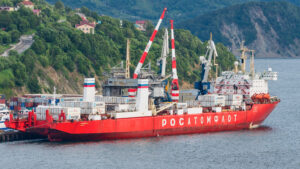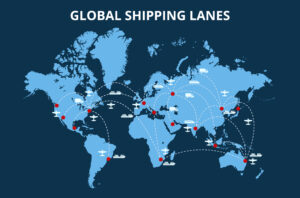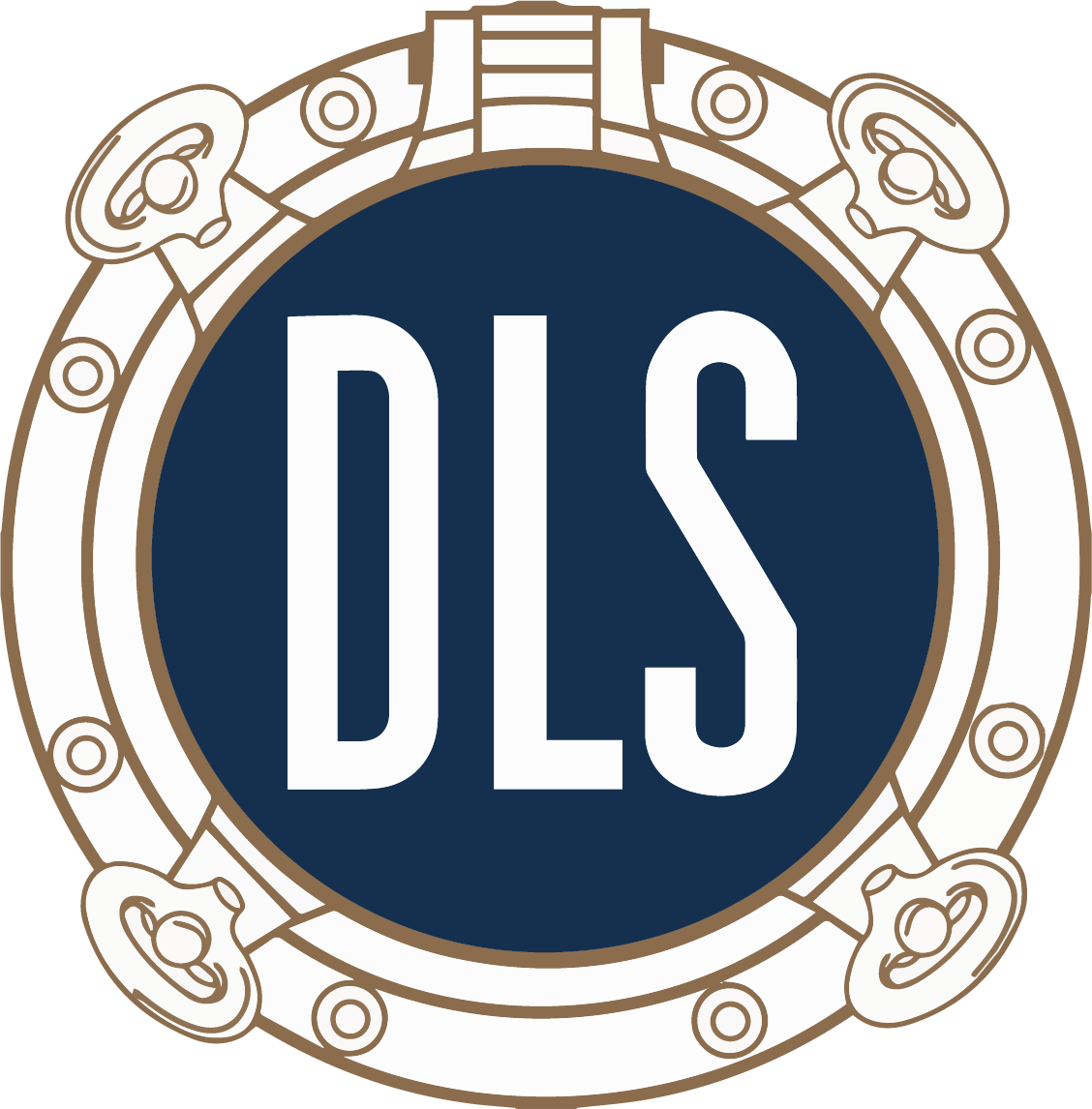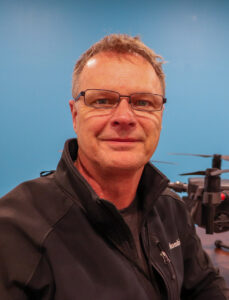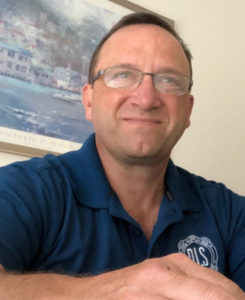What 2024 Financials Reveal About the Marine Industry’s Future
“Traveling by boat is the best way to travel, unless one can stay at home.”
-Mark Twain
This overview explores select 2024, 10-K Annual Statements with a focus on each company’s assets and production, business performance, and indications of their expectations for 2025.
Great Lakes Dredge & Dock
The year 2024 showed good growth over previous years. All four major work areas were up. The largest growth was in Port Expansion at 46%. We’ve seen expansion in many major ports and in areas that support LNG exports. This particular type of dredging is expected to grow in 2025 due to the government’s interest in expanding LNG export capacity. Coastal Protection, which often involves additions or repairs to U.S. coastlines, was up 33%. This type of work may see a reduction in 2025 if funds shift from local storm-related work to more industrial needs. Maintenance, mostly harbor and river work, increased 31%. This work is necessary to maintain proper access depth. The smallest share was 1% for Rivers and Lakes. It’s worth noting that equipment used in these areas is smaller and more easily relocated. GLDD’s international work was not profitable in 2024.
GLDD’s work for the U.S. Government through the Corps of Engineers (COE) continued in 2024. In 2022, 2023, and 2024, federal work generated about $430 million annually. In 2022, it made up 67% of income; in 2023, 74%; and in 2024, 57%. How this will play out in 2025 is unknown, as there have been comments suggesting COE funding might be reduced, though some funds could still be directed to industry support. Notably, 53% of GLDD’s 2024 government contracts, a reported $662.9 million, were canceled. COE projects are subject to cancellation without dispute.
Major dredging vessels include:
1980 – DODGE ISLAND – 3,600 cu. yds.
1981 – PADRE ISLAND – 3,600 cu. yds.
2001 – LIBERTY ISLAND – 15,000 cu. yds.
2017 – ELLIS ISLAND – 15,000 cu. yds.
2024 – GALVESTON ISLAND – 6,500 cu. yds.
2024 – EMILIA ISLAND – 6,500 cu. yds.
The specialized vessel ACADIA is expected to be delivered toward the end of 2025. It’s notable for being the only U.S. Jones Act vessel designed to deliver 20,000 tons of rock offshore. These vessels are used to place heavy rock on the ocean floor to protect infrastructure such as offshore oil rigs, pipelines, and cables. More recently, they’re also used to protect bottom-mounted offshore wind installations.
ACADIA was built to support several East Coast offshore wind projects. GLDD has two contracts for this work. However, a recent court ruling hurt GLDD’s position by allowing foreign-flagged vessels to perform this type of work in U.S. waters. It remains to be seen whether the ACADIA will be used domestically or redirected to foreign wind farm work. They have been in discussions with foreign projects.
While GLDD has many strengths, 2025 could present challenges. Some dredging work intersects with steel and pipe installation, which may be impacted by potential steel import tariffs.
All potential positives and negatives will have to be weighed against the costs of two new medium-service dredges and the arrival of ACADIA. Though not extremely high, they will also continue servicing the debt for their two recently added dredge-assist tugs.
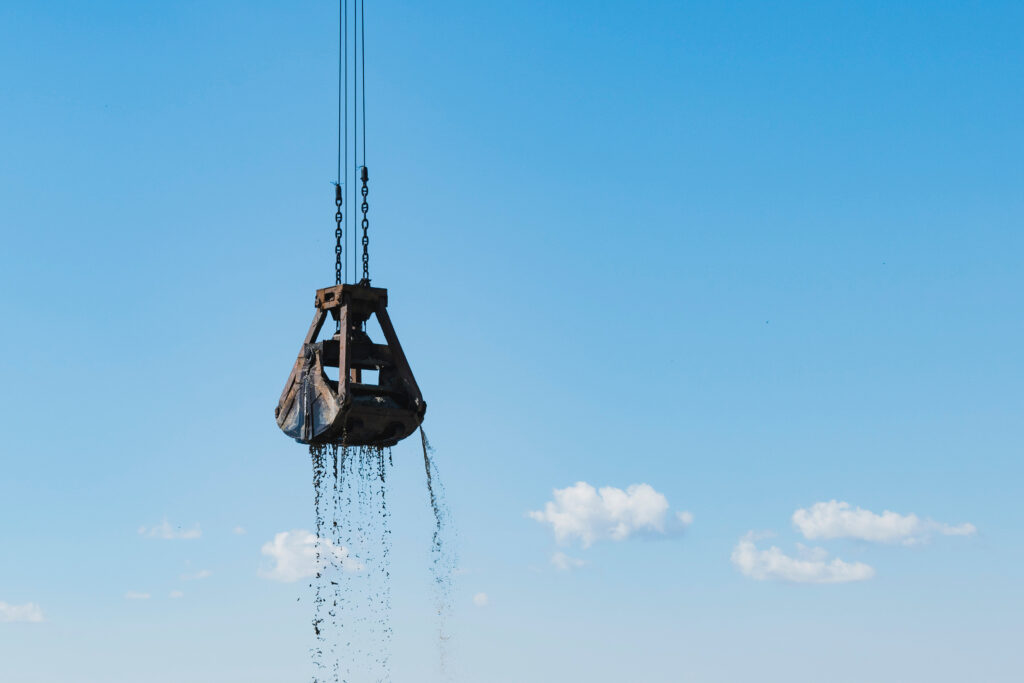
Conrad Shipyard
The company operates five yards: one in Morgan City, LA; three in Amelia, LA; and one in Orange, TX.
|
Total Revenue |
Net Income |
Share |
EBDITA |
|
|
2024 |
$303.4mm |
$11.2mm |
$2.24 |
$22.9mm |
|
2023 |
$239.8mm |
-$27.0mm |
-$5.39 |
-$31.0mm |
In 2024, Conrad had $239.8 million in contracts from 68 customers, down from $253.8 million in 2023. New contracts made up 92.4% in 2024, with 7.6% repeat clients (compared to 86.4% and 13.6% in 2023). A longstanding dispute with Hornbeck resulted in an $8.05 million settlement for Conrad, though it’s unclear how that was reflected in their income report.
To understand their work process, in 2024, 62.4% was non-energy, 3.2% energy, and 34.4% military, which was similar to 2023. Oilfield-related demand in the Gulf (now called the Gulf of America) has been down. Their backlog included 57 vessels from general commercial and military contracts, with no energy-based demand.
Major customers in 2024 included GLDD (19%), the U.S. Navy (14%), and Puerto Rican ferries (10%). At lesser percentages, these were the lead customers in 2023.
While 2024 was a stronger year, Conrad expressed known concerns in the national maritime industry. The 2024 domestic steel costs stabilized but may be under rising material costs due to tariffs. The 2024 inflation and interest rates were down, but what may happen to both of those fields in 2025 is unknown.
There is a general sense that U.S. and foreign policies remain in flux. Potential shifts in federal funding could lead to cuts affecting the U.S. Army Corps of Engineers and the U.S. Navy, both significant sources of work for Conrad. With the government serving as a major customer across many U.S. industries, such changes could result in notable losses.
An interesting aspect of U.S. shipbuilding is reflected in Conrad’s workforce numbers. In 2023, the company employed 149 salaried personnel, 211 hourly workers, and 460 contract workers. By 2024, those numbers rose to 157 salaried, 239 hourly, and 620 contract. Conrad has been open about the ongoing challenges and rising costs involved in sourcing qualified personnel- a difficulty echoed by many other shipyards.
A key point raised in the 2024 report is that Conrad’s fixed-price bids remain subject to fluctuations in yard material and labor needs, as well as the uncertainty of future customer demand.
SEACOR
Seacor’s 2024, 10-K report provided an in-depth look at a U.S. marine company with extensive international operations. Due to the many types of vessels, operating regions, and foreign clients, the report on their financials was lengthy and segmented by income and expense categories. I am not qualified to fully interpret the financial data, but the general takeaway was that returns were strong in 2022, then declined in both 2023 and 2024.
Their report kicks off with key financials:
|
2024 |
2023 |
2022 |
|
|
Revenue |
$762,693mm |
$589,625mm |
$648,781mm |
|
Net Income |
$57,265mm |
$13,906mm |
$(34,055mm) |
|
Adjusted EBITA |
$135,964mm |
$72,977 |
$16,966mm |
|
Diluted Earnings (Shares) |
$.084 |
$0.21 |
$(0.52) |
|
Total Assets |
$1,255,103mm |
$1,110,840mm |
$981,780mm |
The company operates 54 vessels: Platform Supply Vessels (PSVs), Fast Supply Vessels (FSVs), Liftboats, and Anchor Handling Tug Supply Vessels (AHTS). The 2024 fleet was consistent with 2023 and 2022: 16 U.S.-flagged and 35 foreign-flagged vessels. The fleet’s average age in 2024 was 10 years, ranging from 8 to 14.
PSVs ranged from 190′ to 300′, with two new vessels under construction in China for delivery in 2025 and 2026. FSVs ranged from 145′ to 205′, with speeds of 20-45 knots and capacities of 36-150 passengers. Twenty are rated DP-2, and two are DP-3. Liftboats have jack-leg lifting capacities from 235′ to 335′, all equipped with DP-1 or DP-2 controls, various cranes, and some with helipads. They work offshore in oil, gas, and wind energy sectors. AHTSs, all foreign-flagged, are used for towing, supply transport, and ROV support.
Fleet deployment in 2024: 10 vessels in the U.S., 20 in Africa/Europe, 15 in the Middle East/Asia, and 9 in Latin America- similar to previous years.
The split between their U.S.-flag and foreign-flag vessels presents regulatory and operational challenges. Foreign customers made up 76% of revenue in 2024 (compared to 74% in 2023 and 66% in 2022), a trend expected to continue in 2025. Varying international fuel standards, marine inspections, and greenhouse gas regulations add complexity.
Domestically, SECOR is watching how changes in the oil, natural gas, and wind farm industries could affect their U.S.-flagged fleet. New U.S. laws may impact the ability of some foreign-controlled vessels to conduct domestic port-to-port work. Meanwhile, some foreign-flagged vessels face inconsistent enforcement of international cybersecurity and pollution rules.
SECOR shares many of the same challenges as other marine service providers operating globally in oil, gas, wind, piping, and offshore construction.
Overseas Shipholding Group
On July 10, 2024, Overseas Shipholding Group was acquired by Saltchuk Resources Inc. It is now a wholly owned private subsidiary.
Arcosa
Arcosa has been in business for 84 years, with many successful years including 2024. Growth continued across its three main sectors: Construction Products (primarily aggregates), Engineered Structures (including wind towers), and Transportation Products.
Company-wide, 2024 revenues reached $2.6 billion, with adjusted net income at $148 million and adjusted EBITDA at $447 million.
Focusing on Transportation Products: The company sold its steel components division in August 2024 at a $21.6 million loss. However, this was partially offset by increased inland hopper and tank barge sales. Revenue in the sector decreased 3.7%, but barge deliveries were up 17.7%, and the 2025 delivery backlog is strong, with early signs pointing to continued strength into 2026.
The slower pace of new hopper barge construction stems from fewer scrapped barges, driven by high domestic steel and labor costs. Still, demand for both hopper and tank barges is expected to grow in 2025 and 2026 as dry and liquid cargo needs increase. Previous demand surges coincided with falling U.S. steel costs. There’s concern that the 2025 steel supply may rise due to increased imports, depending on tariff changes.
As with every company covered here, Arcosa listed economic and political uncertainty in 2025 as a key risk.
Caterpillar
As noted last year, Caterpillar’s marine business continues to be slow. The company is also seeing weaker sales in its general construction equipment segment.
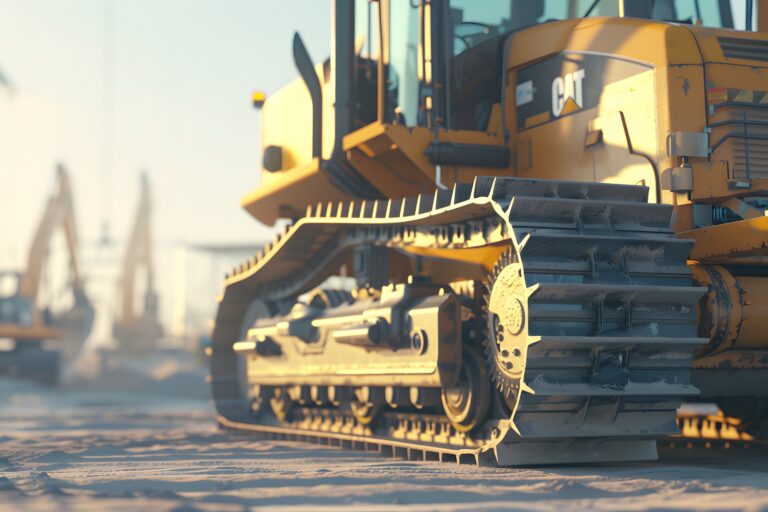
One interesting development: Its Solar Turbines division is collaborating with Chevron to produce a stationary gas turbine using high-hydrogen fuel blends. While not marine‑focused, innovations like this may eventually become relevant to ships as the industry works to reduce GHG emissions.
Anyone who has attended the International WorkBoat Show in New Orleans knows that fully capturing the financial state of the marine industry is nearly impossible- there are simply too many equipment and vessel builders, most of whom don’t file U.S. 10-Ks. The 2025 IWBS meeting this December should be informative.
Inland
Coal transport by inland barge continues to decline. While quarterly volumes fluctuate, total shipments have dropped every year since 2006, except in 2015. The primary reason is reduced coal use in power generation, replaced by alternative energy sources. These new forms of electricity demand rose 2.9% in 2024 compared to 2023.
Natural gas use remained stable, despite a 5% price drop. Solar power grew 37.4%, wind increased 9.9%, and hydro rose 5.4%- all compared to Q4 2023.
Colder weather in Q4 2024 contributed to increased electricity use and supported coal. There are also reports that the federal administration may be moving to support coal while reducing solar and wind initiatives.
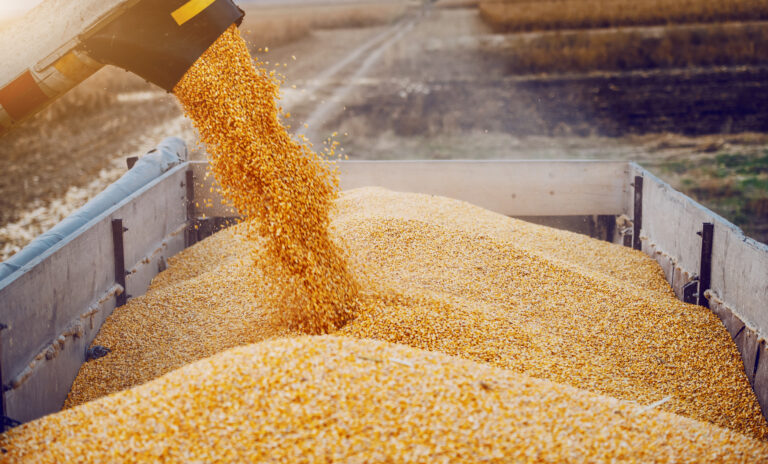
Corn planting is projected to grow 5.2%. This is good news for barge shipments, as much of the crop is grown in river-adjacent states. Corn exports are expected to rise 4.1% over the previous 12-month period.
Soybean planting declined 4.1% as farmers shifted to corn. Export figures are still being finalized, but there’s growth in unshipped soybean exports, suggesting a positive trend.
Combined, the outlook for 2024–2025 corn and soybean exports is promising and should support continued barge traffic. This appears that it can be healthy with reductions to China.
As we move further into 2025, it’s clear that the marine industry continues to balance opportunity with uncertainty. While several companies saw solid growth in 2024, they also face shifting regulations, evolving energy demands, and rising material and labor costs. The outlook remains cautiously optimistic, especially in areas like barge construction, offshore wind, and government contracting. We’ll continue watching how these trends develop throughout the year and what they mean for our industry.
If you’d like to keep this conversation going, please email me at nlaskay@DLSmarine.com


